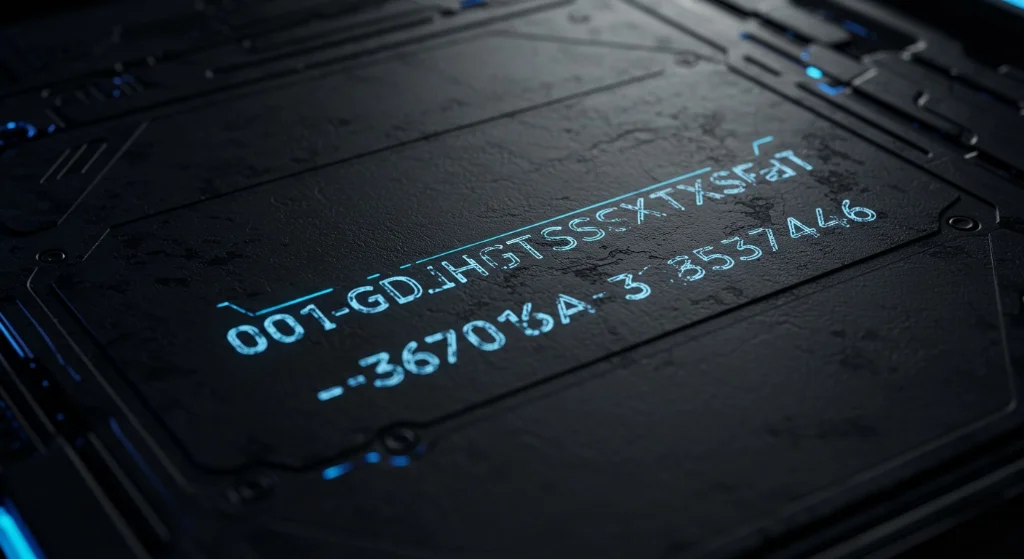001-gdl1ghbstssxzv3os4rfaa-3687053746 – What You Need to Know About This Suspicious Identifier
If you’ve come across the cryptic string 001-gdl1ghbstssxzv3os4rfaa-3687053746—whether in a URL, email attachment, log file, or background process—you’re not alone. More people are searching for it, raising concerns about its origin and intent.
Is it a harmless file? A malware signature? Or part of a larger botnet identifier?
In this guide, we break down what 001-gdl1ghbstssxzv3os4rfaa-3687053746 could be, where it may appear, and whether or not it poses a digital security risk.
Understanding 001-gdl1ghbstssxzv3os4rfaa-3687053746
At first glance, this looks like a machine-generated identifier. It follows a structure commonly seen in:
-
Encrypted file names
-
Malware signatures
-
Database keys
-
Tracking tokens in malicious URLs
-
System log entries for background scripts
The components can be broken down:
-
001-= Possible file version or sequence ID -
gdl1ghbstssxzv3os4rfaa= Randomized alphanumeric string, likely obfuscated or hashed -
3687053746= Could be a Unix timestamp, user ID, or server-side reference
This format suggests that the string was generated by an automated system, which can be a red flag in cybersecurity.
Why 001-gdl1ghbstssxzv3os4rfaa-3687053746 Could Be Harmful
Here are the primary reasons experts flag such identifiers as potentially dangerous:
1. Malware File Name Obfuscation
Advanced malware hides behind strings like this to evade antivirus detection. These files often blend into legitimate directories or email attachments.
2. Exploit Payload Naming
Attackers might use identifiers like 001-gdl1ghbstssxzv3os4rfaa-3687053746 to label custom exploit payloads or scripts used in zero-day attacks.
3. Tracker in Suspicious URLs
Some phishing or malware-laden links contain similar long tokens to track clicks, session info, or deliver custom attacks based on user behavior.
4. Botnet or Backdoor Signatures
This type of string may appear in botnet communication logs or encrypted payloads used in persistent backdoor attacks.
How to Know If This String Is On Your Device
If you suspect that 001-gdl1ghbstssxzv3os4rfaa-3687053746 is linked to a suspicious file or process, check:
-
Your Downloads Folder: Look for oddly named files or compressed archives.
-
Running Processes: Use Task Manager or Activity Monitor to view active background processes.
-
Browser History or Cache: If you clicked a suspicious link, this string may appear in session logs.
-
Log Files or Server Access Logs: Web admins should search server logs for any requests containing this ID.
Steps to Protect Yourself
1. Do Not Open Unfamiliar Files
Never open an attachment or run a file with a string like 001-gdl1ghbstssxzv3os4rfaa-3687053746, especially if it arrived unexpectedly.
2. Scan Your System Thoroughly
Use reputable antivirus or anti-malware tools with real-time protection and heuristic analysis.
3. Monitor Network Traffic
Use a firewall or packet sniffer to track outbound connections. If you spot unusual activity referencing this ID, block the IP or domain involved.
4. Clear Your Cache and Cookies
If the string was part of a URL or redirect, it could have stored tracking cookies. Clear your browser cache and run a security-focused cleanup tool.
Why These Strings Are Increasingly Common
As automation in cyberattacks becomes more sophisticated, attackers use machine-generated identifiers to:
-
Avoid signature-based detection
-
Randomize file names or payloads
-
Track victims across web sessions
-
Coordinate decentralized attacks (e.g., botnets or wormable exploits)
Identifiers like 001-gdl1ghbstssxzv3os4rfaa-3687053746 are part of this trend. They make it harder for conventional antivirus programs to detect threats based on names alone.
FAQs About 001-gdl1ghbstssxzv3os4rfaa-3687053746
Is this a virus or malware name?
It is not a widely recognized malware signature by name, but its structure and format resemble those often used to disguise malicious files or links.
What should I do if I see this on my system?
Immediately scan your device, do not interact with the file or link, and check for any recent suspicious activity or unauthorized access.
Could this be a false alarm?
Yes, in some rare cases, such strings are generated by safe systems (e.g., temporary file managers, session cookies). But given the structure, it’s better to be cautious.
Is this connected to a known cyberattack?
There’s no public attribution to a specific known campaign at the time of writing, but such identifiers are often used in covert or targeted attacks.
Should I report this string to cybersecurity authorities?
If this string appears in a suspicious context or across multiple devices/networks, it’s worth reporting to your IT department or a local CERT (Computer Emergency Response Team).
Final Thoughts: Stay Informed, Stay Secure
While 001-gdl1ghbstssxzv3os4rfaa-3687053746 may seem like digital noise at first, ignoring strings like this can lead to major security breaches. Whether it’s part of a phishing attempt, a botnet connection, or an obfuscated payload, it’s vital to treat all unfamiliar digital artifacts with scrutiny.
Understanding and investigating unknown strings is one of the first steps in modern digital hygiene. When in doubt, don’t click, don’t open—and always scan.
